How to do a vendor pitch at a tech conference, working the booth, at HallwayCon, etc.
Preparing for a delivering the 60 second pitch, talking with people at the vendor booth, and structuring your pitch and conversation strategy. Also, being normal and staying sane.
If you work at a company, or in an open source projects, you’ll have a lot of chances at a tech conference to sell your organization’s stuff: products, cloud services, consulting, promoting your project, or just yourself. You’ll get a lot of opportunities to do this, especially if you’re a sponsor of the event and have a booth, or are giving a talk.
I’ve been in this situation many times over the pat 18 years, and here’s what I try to do. As with my how Amsterdam works episode a few days ago, I wrote this for the younger version of myself who had no idea what they were doing and, thus, felt uncomfortable for too long.
Prepare 3 points
First, I always try to be prepared. Though my style may seem spontaneous and disorganized, it’s actually a carefully planned act…and also a weird mix of creating a comfortable and interesting space for myself so I don’t feel awkward or get bored.
I begin by writing down key points I want to make and distill them into three main ideas. During DevOpsDays one minute pitches id write these down on a notecard or other hand sized piece of paler and review them while waiting to go on stage, sometimes. Sometimes I’d bring them on stage as the opportunity to make a joke (see below): “I always forget to actually pitch my company, so brought these notes…”
Audience
Knowing the audience helps as well; I make sure to ask local salespeople about the attendees' backgrounds and any relevant local events. If you haven’t learned the subtleties of talking to different nationalities, don’t worry too much about it. For Americans, the main thing to know is that people in other countries will miss a lot of your inside jokes. In the tech world we rely on a lot of that kind of shared knowledge to communicate. But, don’t fret about it.
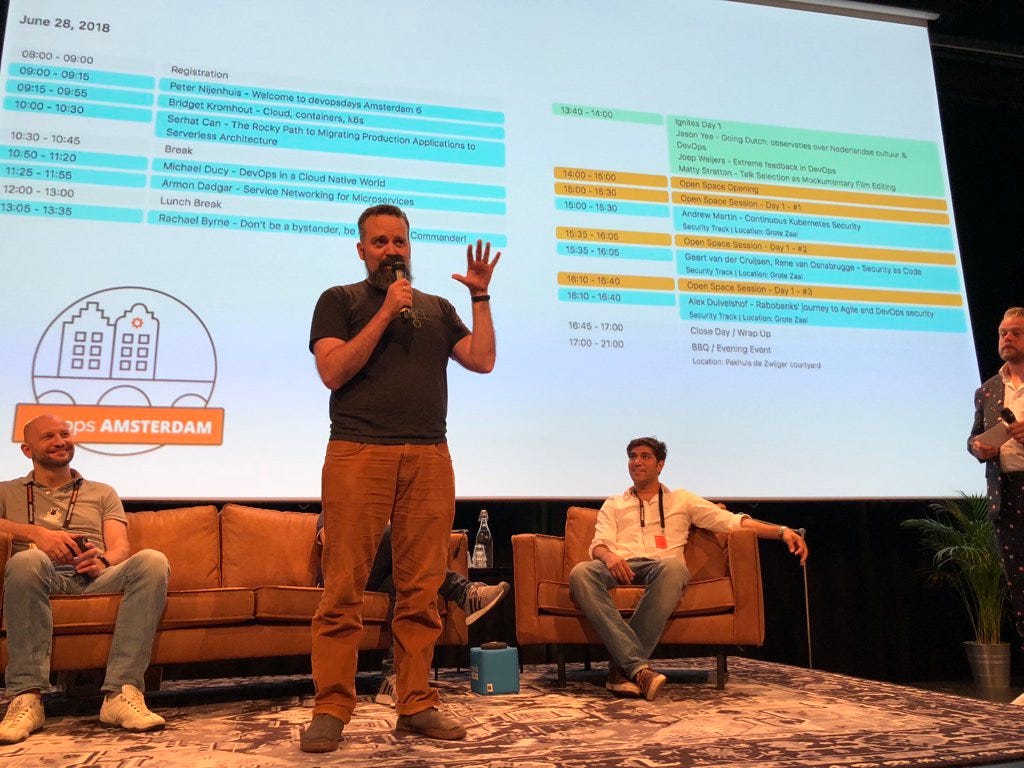
In the tech world, the main thing is to know is of you’re pitching to fellow vendor/community people, individual buyers at small shops, individuals at large companies (banks, governments), or “decision makers”/executives (and company and industry size), etc. This might modulate a lot of what you talk about.
Figure out the “roles” in your audience and what they’re interested in and not interested in. An executive at a large bank isn’t going to care too much about technical details, they’ll want to know benefits/outcomes. An individual technical person will want to hear that, but also how your “product” does it, for example, the languages it supports or cool “speeds and feeds,” or the methodologies/cultures it supports (“tools for platform engineering”).
When giving a pitch at a tech event, it’s a good idea to discuss how your company relates to the conference’s theme. That, after all, is an interest that all the attendees have.
For example, at DevOpsDays, I’d talk about how Pivotal Cloud Foundry (now the Tanzu Application Platform) solves DevOps problems by eliminating lower-level automation and making DevOps real. And about how all of that makes application developer more productive. This way, we help our clients create better software and run it reliably in production.
The general structure and content of the pitch are:
Product name and your company name.
How it solves problems the audience has.
the benefit the audience gets (in marketing speak: “business value,” “outcomes,” etc.)
If you can mention a big name customer or two in there, you get bonus points. For example, I can throw in that Mercedes, JP Morgan Chase, the US Army and Airforce, etc. use our stuff, many of them for five years or more.
A specialized type of pitch is the recruitment pitch. This doesn’t happen a lot, but at DevOpsDays and (I think?) events like KubeCon you’ll have a lot of buy-side companies (they’re not vendors) there to recruit. This is more or less the same, but treat your company and the exciting work people will be doing as the product. Of course, vendors can recruit too.
For KubeCon EU
For something like KubeCon, once you figure out the interests of the person you’re talking with you’ll probably talk about:
Simplifying kubernetes.
How application developers interact with/suffer from/etc. kubernetes.
Security (always, for any product or service).
Narratives/stories/status about the various projects in Kubernetes.
Using kubernetes on-premises versus in public cloud (multi-cloud!).
This year, probably cost management (FinOps!)
Platform engineering, etc.
You should check out the past few years of our State of Kubernetes surveys for more topics. Look at the questions about problems people have, benefits they achieve, and the spread of multi-cloud (where they run kubernetes) for some ideas. Here’s my analysis of the 2022 suvey. Also, we have a new one coming out in a couple of days, which I’ll, of course, tell you about here in the newsletter. Here’s a preview.
And, if you run out of stuff to talk about, or need to bootstrap, you can talk about the ins-and-outs of Amsterdam and things to do while people are in town
Oh, and by the way, you should check out the talks and other fun us at VMware are doing at KubeCon. As you’d expect, there’s a lot of us there, including me. I’m giving five (WTF?!) talks at our booth as well:
Wednesday, April 19th at 3pm - “Platform Engineering"? But I just learnt DevOps!
Thursday, April 20th at 12:30pm - Shifting Left for Real, with Adib Saikali.
Thursday, April 20th at 1pm - Winning Over Developers: Boost Platform Adoption.
Friday, April 21st at 11:30am - Lost APIs: API Discoverability in Large Organizations, with Adib Saikali.
Friday, April 21st at 12:30pm - Build the platform developers want - 2 ways to fit platform features to developer needs.
I need to work on those!
Your preparation is a safety net, not a script
Now, I often forget to go over most of, if not all, of the content I prepared, but that’s fine, really. Some of it will show up during the pitch, and I never let my three points constrict me. Instead, I use them as a fallback. As you do it over and over, you’ll memorize the talking points: not word for word, but that you want to make them.
Be interesting
One of the most significant challenges of giving these pitches is making them engaging and memorable. I’ve found that using humor can be a powerful tool in this regard. Opening with a joke, even a lame one (but never offensive), can make the audience laugh and pay closer attention to your pitch. It also gives me a confidence boost that carries me through the next 45 to 30 seconds.
Most people in the tech world have some degree of insecurity about themselves. So, if you display that as well: making fun of yourself, pointing out your foibles (like me needing to bring that little card of my pitch with me on stage, or saying that I used to program but now I just make slides; etc.) you’ll get into a comfort zone with the audience and get them engaged.
If you can pull it off, making fun of your product/service works too. For example, I sometimes joke about our product’s pricing: “Good thing our product actually works, 'cause it ain’t cheap.” You have to be careful here: if you’re perma-cynical or in a bad mood that day you might find yourself actually dissing the product. Working on it, you after all know all its problem and probably complain about them with co-workers all the time so you have that pitch down cold.
Generally, the most important thing to avoid is being too formal or stiff. If you’re naturally reserved in public speaking situations, try to talk about your personal feelings (and problems as above) and experiences related to the pitch. Discussing your thoughts is easy because you’re the expert on your own perspective.
Whatever the case, focus on your pitch’s primary goals: stating the company’s name, what it does and how, the benefits, and then encouraging people to visit your booth for further discussion. I usually just say “we have free stuff at our booth, come and get it.” If you don’t have a booth, you need some call to action, if it’s just “so tell me if you’re interested” or some variation of “does that apply to you, what are your thoughts, etc.?”
Free stuff at the booth
In my experience, giveaways are an effective to get people to your booth. Most everyone loves free stuff. Only a few of the people who come to get free stuff will be potential customers (“qualified leads”), so don’t get too obsessed with every single person.
You’ll see a lot of people at tech conferences hesitating around the edge of the booth. They want your free stuff but they sure as hell don’t want you pitch them, or even talk with them. Or scan their badge.
In those cases, just say something like “want some free stuff?” That usually bring them in. “We really want you to take it, otherwise we’ll have to lug it out of here.
You’ll build up the ability to quickly tell if they’re actually interested, meaning you can talk further. Most people won’t be, and you can just say “have fun!” and to tell them which booths have the other good free.
Getting the good leads at the booth
For the people who stay to talk, keep this goal in mind: the point of the booth interaction is to find potential customers and influencers in the buyer process. Building awareness is good as well. Here’s how to get those conversations going so you can find those “qualified leads.”
If someone looks interested, start slow with “how are you liking the conference?” and just go from there. Then ask them “so, what do you do?,” that is their job. An odd quirk: Americans generally know that this question is asking what their job is. Europeans get a bit confused: do you mean, like, they like motorcycling (this is a surprisingly big hobby among European tech conference attendees) and woodwork (not so popular in Europe in my experience)…or yaml? This is probably some “turns out” commentary on US/EU life-balance and identity, or whatever.
If someone is really interested and not shy, they just straight up start asking questions, and you’re all set.
If you have a more PLG/high volume sales model then it’s probably good to have some kind of PLG give away like free credits for your SaaS, etc.
At larger events, your marketing people will pressure you to scan badges, like, first thing. This is fine, really, but I’d wait to do that until you’ve established that the person is interested in you. This will screw up your marketing people’s OKRs/KPwhatevers, but, I don’t know: why not push the limits of “quality versus quantity” claims I’m sure they make too.
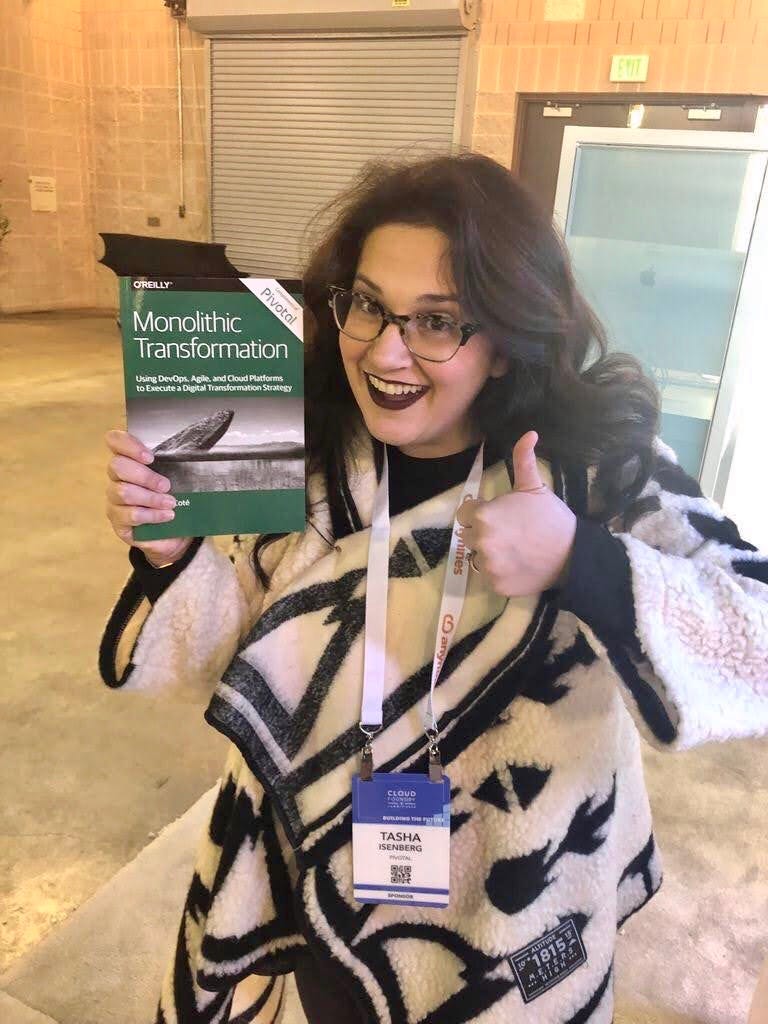
If you’re not a marketing person, what I’d do is get friendly with the marketing people in the booth (if you’re not already) and make an agreement with them that you’ll be the free-wheeling conversation person and they should come by and just be like “can I scan your badge?” That might seem kind of crappy, but in my experience everyone is super happy with that arrangement, even the attendee.
Oh, and, like: yeah, also just be human and nice. You don’t need to be some kind of sales droid. Your goal can also be “I like meeting new people!” But, remember that you’re at work and your job is to help the company make money…or whatever the goals of your organization are (like, raising awareness, usage, and participation in your open source project - while not a vendor pitch, here’s a masterful example of doing all that for an OSS project).
I don’t like scanning badges, but also I’m a professional that likes my pay check and I know how sales works, so, you know: I’ll do it if needed. This is one way DevOpsDays and other events that don’t allow for badge scanning are nice.
The power of “I don’t know”
You’ll get a lot of questions about things you don’t know about. Here is what you do to make that situation work smoothly, say, “I don’t know.” That’s it. And then you can refer people to one of your booth-mates who does, or, even better take their contact information and hook them up with someone later.
You just got a lead!
Once you’ve said “I don’t know,” you can ask the person to educate you on it, “tell me about it.” Then you have a further conversation going.
“Be yourself,” etc.
Another comforting thought is that if you mess up, it doesn’t matter too much. It’s only a 60-second pitch, and people will still visit your booth if the organizers have done their job in driving foot traffic. Treat this as a learning experience and practice for future presentations. Like I said, I’ve done this for, like 18 years, so I’m comfortable with all of it. If you’re nervous about it, do that mind-trick thing where you’re like “this is a great chance to learn!”
Some people prefer to memorize their pitches, which is fine if that helps you. However, the key to success in these short presentations and booth pitches is to have fun and be playful. Remember, the stakes are low, and nothing terrible will happen if you don’t deliver a perfect pitch.
Your goal isn’t to close the deal, or even have further conversations. Your goal is to find and then setup people to have those conversations. To use marketing speak: you’re doing top of funnel activity. Unless you’re a sales engineer (very few sales reps/account executives staff booths - it’s always nice to see them there), after the TOFU course, someone else usually handles the MOFU and BOFU. These are actually terms(!), though I really wish we could figure out ending them in an “O.”
You’ll do great!
Doing these quick pitches at a tech conference may seem intimidating, but with the right approach and mindset, it can be a valuable opportunity to showcase your company and connect with potential customers. From my experience, focusing on these key aspects can make a significant difference:
Preparation: Write down your key points, distill them into three main ideas, and rehearse them before taking the stage. Focus on the product/project name, how it solves the problem, and the benefits the person will get - work in customer names if possible.
Audience awareness: Understand the audience’s background and tailor your content accordingly. Are they individual tech people, executives, etc. What size organization do they work at?
Be interesting, at least casual: Use humor, anecdotes, and personal insights to connect with your audience and make your pitch stand out.
In the booth, encourage shy people to come get your free stuff, and ask some simple questions to find people who are actually interested.
And finally, if you’re like me (an introvert), you’ll also need to find some downtime after all this to “recharge.” Attending a talk you have no interest in and sitting in the back-row is a good way to escape.
You’ll have a good time. It’s fun to have an excuse to talk with people.


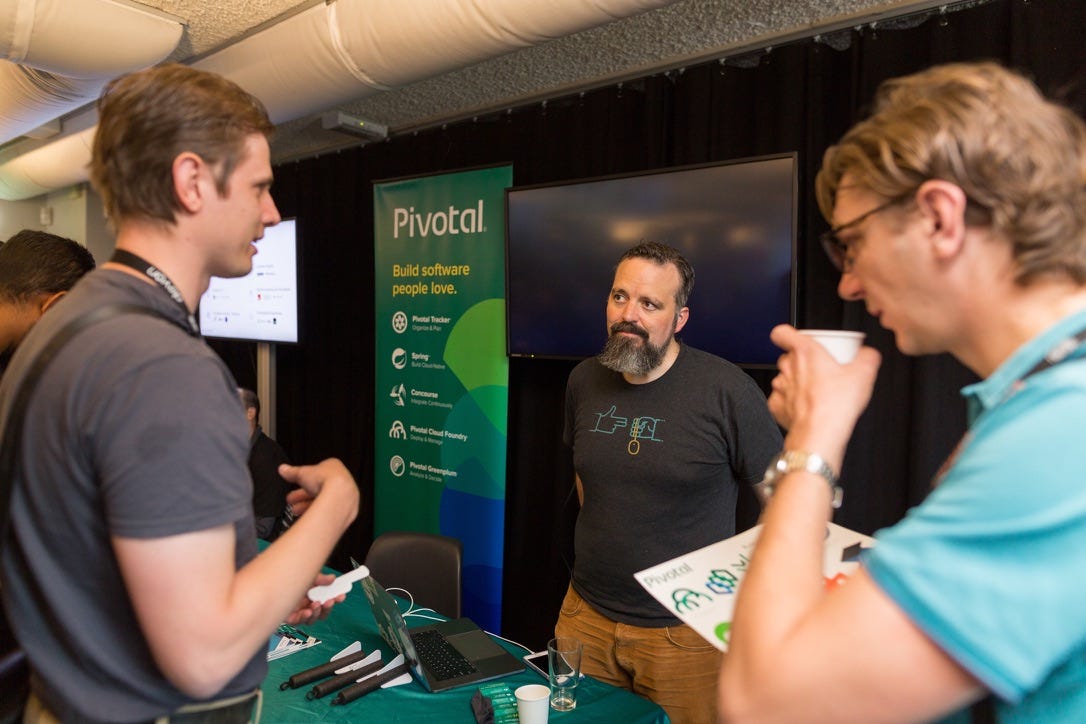
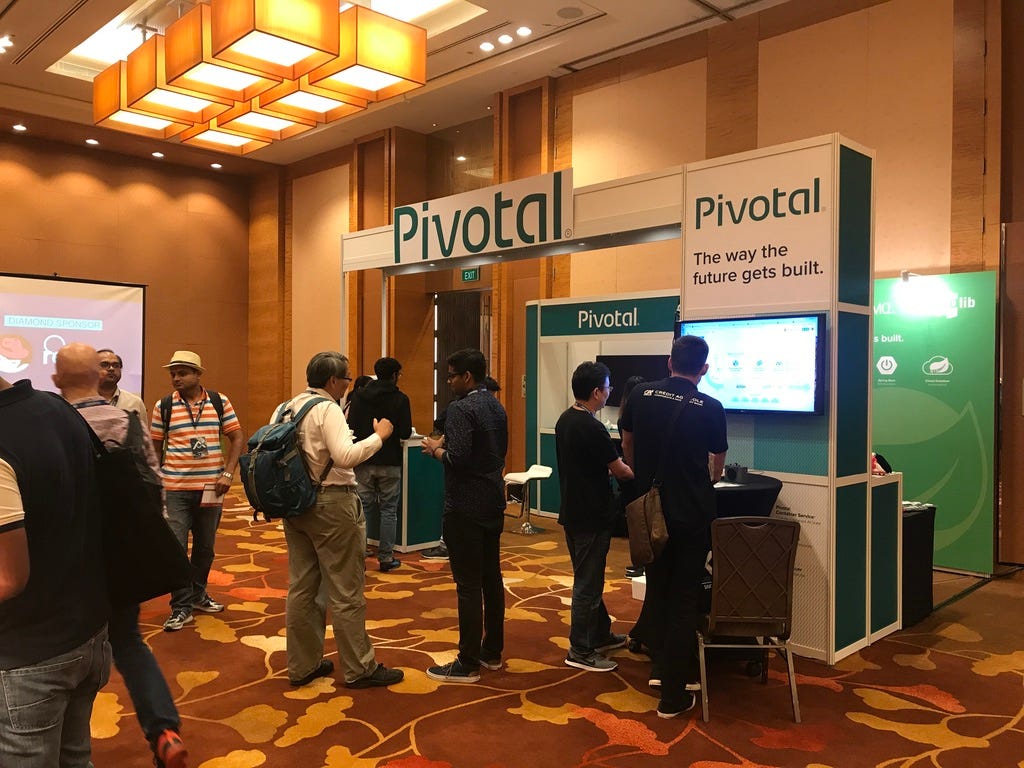


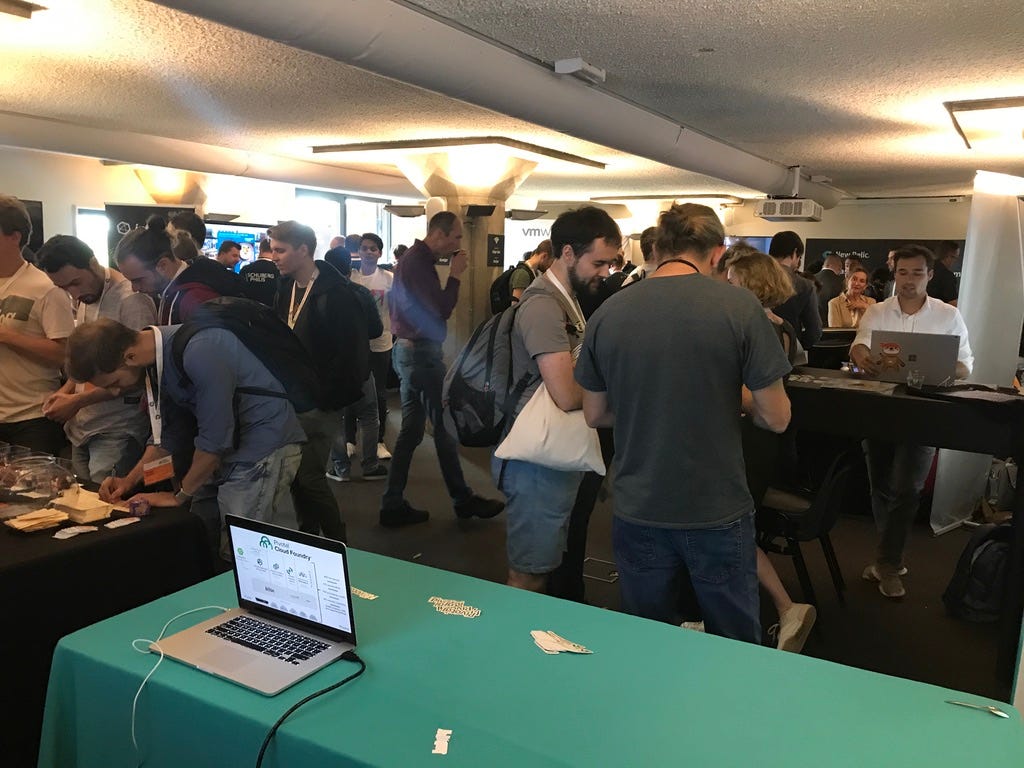
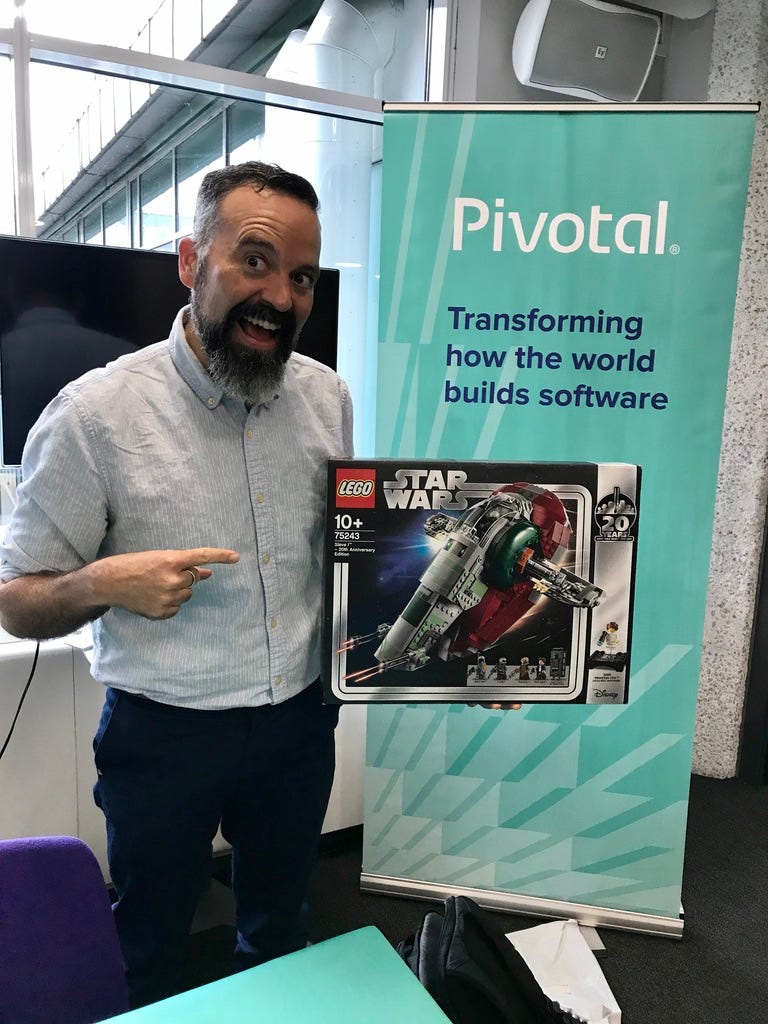
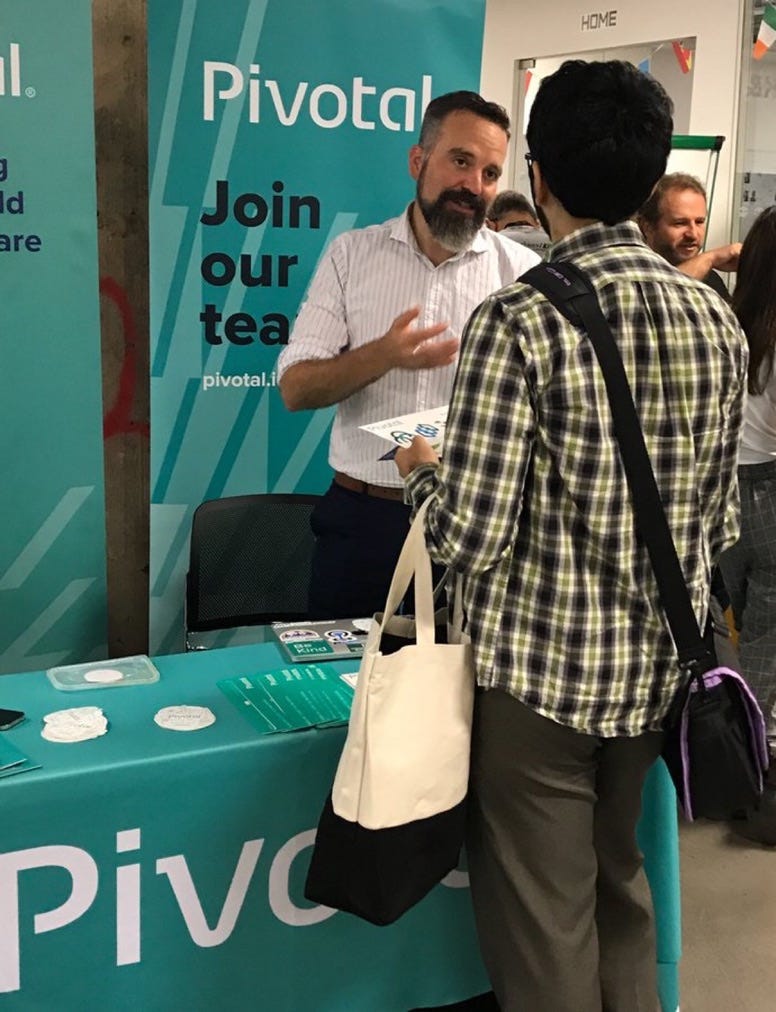
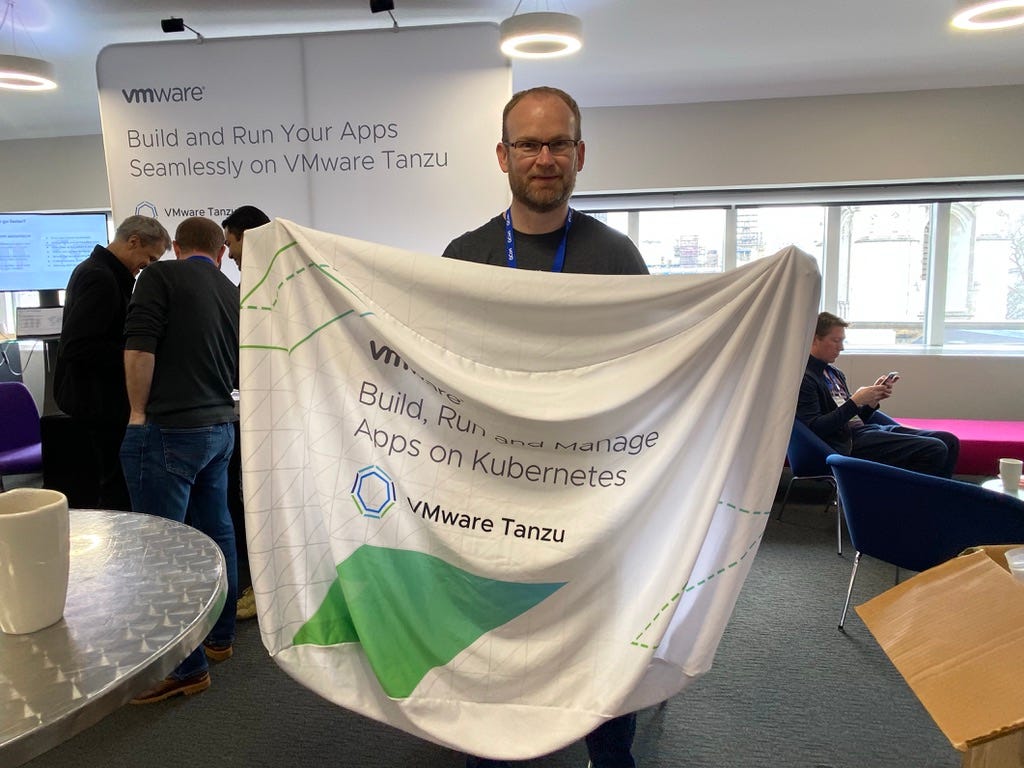
I thoroughly enjoyed this piece, Cote. The point about tailoring/distilling the pitch to the audience and focusing on the specific problem the product solves was particularly insightful.